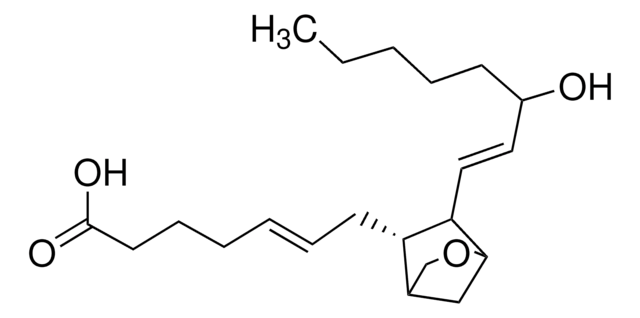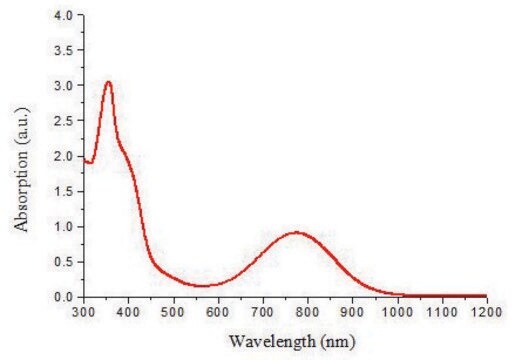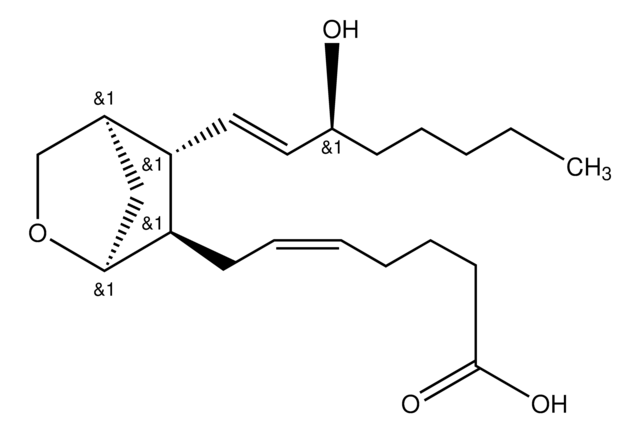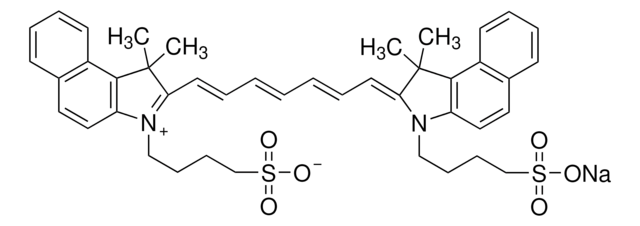推薦產品
生物源
rabbit
品質等級
抗體表格
purified immunoglobulin
抗體產品種類
primary antibodies
無性繁殖
polyclonal
物種活性
rat
製造商/商標名
Chemicon®
技術
immunohistochemistry: suitable
western blot: suitable
NCBI登錄號
UniProt登錄號
運輸包裝
wet ice
目標翻譯後修改
unmodified
基因資訊
human ... KCNB1(3745)
特異性
Recognizes a full length Kv2.1 protein. Does not cross react with any other potassium channel antigens tested so far.
SPECIES REACTIVITIES: Should work in mouse (100% epitope homology) and in human and rabbit (88% epitope homology). Other species have not been tested.
SPECIES REACTIVITIES: Should work in mouse (100% epitope homology) and in human and rabbit (88% epitope homology). Other species have not been tested.
免疫原
Purified peptide from rat Kv2.1 (amino acids 841-857) (Accession P15387),
應用
Anti-Potassium Channel Kv2.1 Antibody detects level of Potassium Channel Kv2.1 & has been published & validated for use in IH & WB.
Research Category
Neuroscience
Neuroscience
Research Sub Category
Ion Channels & Transporters
Ion Channels & Transporters
Western blot: 1:250-1:500 using ECL on rat brain membranes.
Immunohistochemistry using rat brain sections.
Dilutions should be made using a carrier protein such as BSA (1-3%)
Optimal working dilutions must be determined by the end user.
Immunohistochemistry using rat brain sections.
Dilutions should be made using a carrier protein such as BSA (1-3%)
Optimal working dilutions must be determined by the end user.
外觀
Format: Purified
Purified immunoglobulin by Protein A. Lyophilized from phosphate buffered saline, pH 7.4, containing 1% BSA, 5% sucrose as a stabilizer and 0.025% sodium azide as a preservative. Reconstitute with 50 μL of sterile deionized water. Centrifuge antibody preparation before use (10,000 xg for 5 min).
儲存和穩定性
Maintain lyophilized material at -20°C for up to 12 months. After reconstitution maintain at -20°C in undiluted aliquots for up to 6 months. Avoid repeated freeze/thaw cycles.
分析報告
Control
CONTROL ANTIGEN: Included free of charge with the antibody is 20 μg of control antigen (lyophilized powder in phosphate buffered saline, pH 7.4, containing 5% sucrose and 0.025% sodium azide). The stock solution of the antigen can be made up using 50 μL of sterile deionized water. For negative control, preincubate 1 μg of peptide with 1 μg of antibody for one hour at room temperature. Optimal concentrations must be determined by the end user.
CONTROL ANTIGEN: Included free of charge with the antibody is 20 μg of control antigen (lyophilized powder in phosphate buffered saline, pH 7.4, containing 5% sucrose and 0.025% sodium azide). The stock solution of the antigen can be made up using 50 μL of sterile deionized water. For negative control, preincubate 1 μg of peptide with 1 μg of antibody for one hour at room temperature. Optimal concentrations must be determined by the end user.
其他說明
Concentration: Please refer to the Certificate of Analysis for the lot-specific concentration.
法律資訊
CHEMICON is a registered trademark of Merck KGaA, Darmstadt, Germany
免責聲明
Unless otherwise stated in our catalog or other company documentation accompanying the product(s), our products are intended for research use only and are not to be used for any other purpose, which includes but is not limited to, unauthorized commercial uses, in vitro diagnostic uses, ex vivo or in vivo therapeutic uses or any type of consumption or application to humans or animals.
未找到適合的產品?
試用我們的產品選擇工具.
儲存類別代碼
11 - Combustible Solids
水污染物質分類(WGK)
WGK 3
分析證明 (COA)
輸入產品批次/批號來搜索 分析證明 (COA)。在產品’s標籤上找到批次和批號,寫有 ‘Lot’或‘Batch’.。
T Yamashita et al.
Circulation, 101(16), 2007-2014 (2000-04-26)
Atrial fibrillation causes electrophysiological changes of the atrium, thereby facilitating its maintenance. Although the expression of ion channels is modulated in chronic atrial fibrillation, it is yet unknown whether paroxysmal atrial fibrillation can also lead to electrical remodeling by affecting
L Betancourt et al.
Journal of neuroscience research, 61(6), 646-651 (2000-09-06)
Basal forebrain cholinergic neurons (BFCN) are depleted early in the course of Alzheimer's disease (AD). BFCN voltage-gated K(+) channels regulate acetylcholine release and may play a role in BFCN neurodegeneration. Neuronal voltage-gated K(+) channels are heterotetrameric assemblies of K(v) and
Mark G MacAskill et al.
Journal of nuclear medicine : official publication, Society of Nuclear Medicine, 62(4), 536-544 (2020-08-30)
Myocardial infarction (MI) is one of the leading causes of death worldwide, and inflammation is central to tissue response and patient outcomes. The 18-kDa translocator protein (TSPO) has been used in PET as an inflammatory biomarker. The aims of this
我們的科學家團隊在所有研究領域都有豐富的經驗,包括生命科學、材料科學、化學合成、色譜、分析等.
聯絡技術服務







